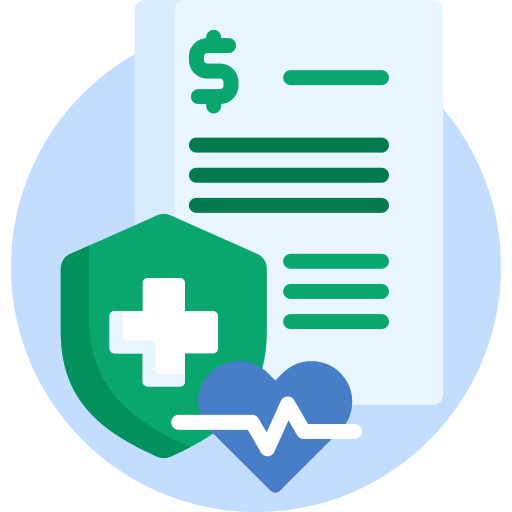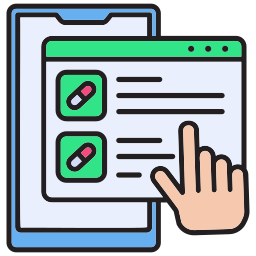Wearable devices are transforming healthcare by providing real-time health data that can improve patient care and decision-making. The U.S. Wearable Technology Market, valued at USD 19.92 billion in 2023, is expected to grow at a CAGR of 12.8% from 2024 to 2030. From fitness trackers to advanced health monitors, these devices offer valuable insights into patients' vitals, activity levels, and overall wellness.
Integrating this data with healthcare systems through APIs ensures that healthcare providers can access and analyze patient information efficiently, streamlining workflows and improving care coordination. Wearable API integration is no longer optional; it is becoming essential for healthcare systems that want to stay ahead in a data-driven world.
HealthConnect CoPilot simplifies the complex process of wearable API integration. It connects over 300 activity trackers and apps, making it easier for healthcare organizations to collect and manage health metrics from various devices in one place. With features like patient management, practitioner tools, and secure data access, it ensures a smooth integration process that allows healthcare providers to focus on delivering the best patient care without being bogged down by technical challenges.
This step-by-step guide will walk you through how HealthConnect CoPilot handles the integration process from consultation to maintenance.

Step 1: Initial Consultation and Requirement Gathering—Aligning Goals and Defining Key Functionalities
The integration process begins with a detailed consultation to understand the client’s specific goals for wearable API integration and ensure compatibility with their existing systems. During this phase, key aspects such as the scope of wearable devices to be used, primary functionalities, and data sources—such as heart rate monitors or fitness trackers—are identified.
This stage establishes a firm basis by coordinating the integration goals, whether they are to improve patient monitoring or automate data collection. Detailed requirement gathering ensures a clear integration map, covering both hardware and software needs, allowing for a seamless workflow aligned with the client’s operational framework and priorities.
Step 2: System Analysis & Design—Crafting a Patient-Centric, Compliant Solution
The System Analysis & Design phase is essential in developing a solution that seamlessly integrates wearable devices with healthcare systems. This stage involves a comprehensive assessment of the client’s existing infrastructure to identify integration points, ensuring smooth and real-time communication between wearable devices and platforms like EMRs or EHRs.
A critical component of this integration process is establishing secure data exchange using HealthConnect CoPilot’s API with wearable devices using OAuth2 authentication. This approach prioritizes patient privacy and consent, which are essential for accessing sensitive health data legally and ethically. Once patient consent is granted, the system begins collecting and securely storing essential health metrics—including blood glucose levels, heart rate, blood pressure, oxygen saturation, and physical activity data—within HealthConnect as FHIR-compliant observation resources. This standardized approach guarantees that a comprehensive range of health data is accurately captured and consistently available, providing healthcare providers with a holistic view of the patient’s health status.
By addressing compatibility, data security, and regulatory compliance upfront, this phase lays a solid foundation for effective integration. It ensures that the solution aligns with healthcare industry standards, mitigates potential operational disruptions, and enhances the quality of patient care. Ultimately, this patient-centered design empowers healthcare providers with real-time, actionable insights, supporting timely and informed decision-making that can improve patient outcomes.
Related Read - EMR vs EHR: What's the Difference?
Step 3: Development and Testing—Building the Integration with Rigorous Testing
The development phase of wearable API integration focuses on building a secure and compliant solution that meets industry standards like FHIR and HIPAA. These standards ensure the integration supports efficient data exchange while maintaining patient data privacy.
Developers work to create a system that allows wearables to communicate effectively with EHR and other platforms. The goal is to design an integration compatible with various healthcare systems and manage large volumes of data from wearables in real time.
Testing is a crucial part of this phase, focusing on functionality, performance, and security. Functional tests ensure the integration works as intended, while performance checks assess how well the system handles data under different conditions. Security tests are vital to protect sensitive patient information and ensure the solution adheres to all regulations. This rigorous testing ensures the integration is reliable, scalable, and ready for deployment in healthcare settings.
Related Read: HIPAA Compliance in Wearable Health Technology: Key Considerations
Step 4: Deployment – Smooth Roll-out with Minimal Disruption
During the deployment phase of wearable API integration with HealthConnect CoPilot, the focus shifts to executing a smooth rollout. Careful planning ensures the wearable API integration is deployed efficiently, minimizing disruption to existing operations. The process involves configuring the system to integrate seamlessly with existing infrastructure, ensuring all data from wearables flows accurately into the healthcare system.
Collaboration with the client’s IT team is important in this phase. By working together, potential issues are quickly addressed, and workflows remain consistent. This partnership ensures the integration does not interfere with day-to-day operations, allowing healthcare providers to continue their tasks without interruption. Thorough training is provided to key staff, equipping them with the knowledge needed to navigate the new system with ease.
How Healthconnect CoPilot Can Help You with Wearable API Integration?
We offer a structured, step-by-step process for wearable API integration that boosts operational efficiency and patient care. By following a clear framework, organizations can ensure a smooth integration process, minimizing disruptions and maximizing the benefits of wearable technologies. This approach simplifies data access across healthcare systems and supports improved patient monitoring and management, leading to better health outcomes.
Businesses aiming to update their healthcare systems should consider HealthConnect CoPilot as their trusted integration partner. With reliable solutions and a strong focus on smooth integration, we are ready to help organizations make the most of wearable technology. Reach out to us today to see how we can guide your organization through the complexities of Wearable API integration with ease.
- What is HealthConnect CoPilot?
HealthConnect CoPilot is a healthcare interoperability solution that integrates fragmented data and stores it in a HIPAA-compliant and standard FHIR format. Our FHIR-compliant repository follows and uses the latest R4 format. All this is stored on the AWS database. HealthConnect CoPilot helps you connect your older system and allows for non-FHIR formats to be converted to FHIR. On top of this, we’ll provide a ready-to-use analytical dashboard or built-in connector for PowerBi, Tableau, QuickSight, etc.
- What is a Wearable API?
A wearable API is an interface that enables different applications to connect with and retrieve data from wearable devices, like fitness trackers and smartwatches. These APIs facilitate data sharing, allowing apps to use information such as heart rate, steps, and sleep patterns.
- What is Wearable API Integration?
Wearable API integration involves linking wearable device data to other software applications, such as healthcare or fitness apps. Through integration, applications can access real-time data from wearables, providing users with personalized insights and supporting features like health monitoring and activity tracking.
- Why should I integrate wearables with HealthConnect CoPilot?
Integrating wearables with HealthConnect CoPilot allows healthcare providers to access valuable health data from patients in real time, improving treatment outcomes and enhancing overall patient engagement.
- What are the basic steps for integrating wearables with HealthConnect CoPilot?
The integration process typically involves setting up API access, configuring data mapping, testing the connections, and ensuring compliance with data security standards, all of which are detailed in the guide.

Pravin Uttarwar, CTO of Mindbowser
As the CTO of Mindbowser, a healthcare-focused software development company, I am dedicated to delivering cutting-edge digital solutions that transform patient care and operational efficiency. With over 16 years of experience and as an MIT alumnus, I specialize in healthcare interoperability, FHIR-compliant systems, and AI-powered platforms, crafting scalable products and architectures tailored to the unique needs of healthcare providers and enterprises.
I have spearheaded the development of over 100 products and platforms, guiding them from concept to full-fledged solutions. My expertise extends to scaling remote tech teams, driving EHR integrations, and building secure, cloud-native healthcare solutions. By shaping technology visions and roadmaps, I help clients achieve long-term growth and success in the rapidly evolving healthcare landscape.
HealthConnect CoPilot enabled us to access real-time patient health data through integration with Apple HealthKit, enhancing care delivery while maintaining HIPAA compliance. This led to personalized care and improved outcomes for patients.

AI-enhanced Obstetrics Clinical Decision Support Platform
HealthConnect CoPilot's integration with Epic's Hyperspace has transformed our workflow. Automated post-delivery examinations and HL7 protocol use ensure accurate updates to Epic. Their expertise empowers informed decision-making in childbirth

Top Provider for Customized Healthcare Solutions
HealthConnect CoPilot's helped us to integrate with leading tracking devices such as Apple Watches and Fitbit. This integration enables effortless syncing of health data, providing users with real-time insights displayed directly on our flagship products: smart mirrors and digital calendars.

A Provider of Customizable Display Solutions
Post a comment Cancel reply
Related Posts
Wearable Integration in Healthcare: How It Transforms Patient Monitoring and Care?
Wearable integration in healthcare enables real-time patient monitoring, improves chronic disease management, and enhances remote…
Google’s Shift from Google Fit to Health Connect: What It Means for Healthcare Interoperability
Google recently announced its plan to phase out Google Fit by mid-2025, marking a significant…
Step By Step Guide To Implementing Android Google Fit And iOS HealthKit
Healthy living is a modern and prevalent trend, significantly boosting the market for fitness-tracking apps…







